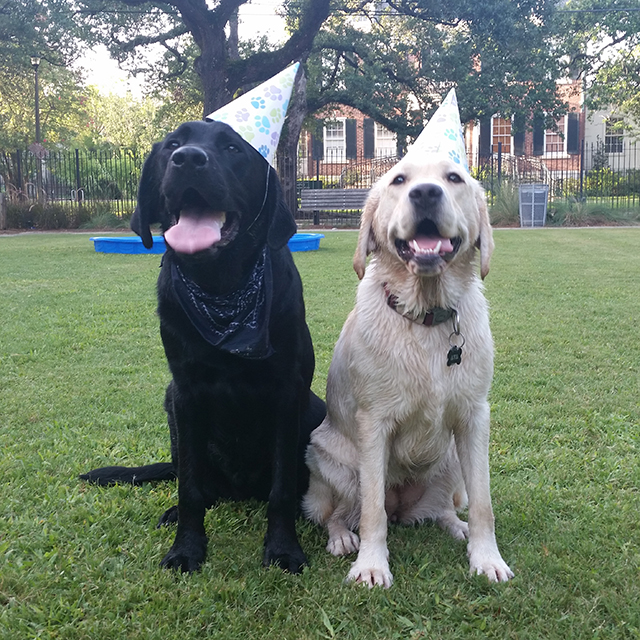Fisher's discs are a simple device consisting of five small-diameter metal plates strung on a ring that are used to train dogs, model and correct their behavior. The discs were first described by trainer John Fisher, who studied animal psychology and described his observations in the popular book What Your Dog Thinks About. The author explains to the owners the perception of the world around them from the point of view of their pets, and also cites various non-violent methods of raising and training dogs, obtained from personal experience. Learning with Fisher's discs while discussing on the Internet received a number of very conflicting reviews regarding its performance. So is it worth it to purchase a device, and how to use it to avoid mistakes and get the expected effect?
Operating principle
In his long practice, John Fisher noted that during training on animals, the best effect is the sound with which you can attract attention, interrupt the dog’s unwanted intentions or stop unwanted behavior. The sound of the discs in itself and reinforced by the verbal command helps not only to train, but also to control the actions of the animal. This small object can be compactly kept in your pocket, to extract a characteristic sound at the right time, or to throw Fisher discs into a dog, but not as a punishment, but as a manifestation of a reaction to the animal’s objectionable behavior. Unlike a stick, a chain and other heavy things, a rather light adaptation will not hurt the animal, but its harsh sound will make it obey the command, even if the dog did not react to it before.

A prerequisite for using the device is the circumstances in which the dog first hears the sound of the discs. It will not look like another familiar sound, and therefore, is associated with other conditions. And it is especially important that the characteristic clang occurs only with the specific action of the dog or its immediate intention to commit an unwanted trick.
How it works?
The sound technique using Fisher's discs is based on the formation of a conditioned reflex in the dog, which must be triggered before the animal decides to perform an action undesirable for the owner. Fisher calls this method negative reinforcement, which is much softer, but more effective than a sensitive leash jerk, scuffing at the scruff of the neck, slapping a newspaper, and other physical punishments. In the case of applying the sound method, do not catch up after the forbidden action, but its warning. The training is divided into two stages: familiarization with the discs and enhancing their effect.
First step
To more accurately state the conditions for how to use Fisher's disks, it is better to give the recommendations of the author himself. Initial familiarization is as follows:
"... I call the dog to me and offer her a treat, saying:" Take it. " I repeat this procedure three or four times. Then, without saying anything to the dog, I make a move to put the treat on the floor. When the dog reaches for my hand, I first clink the discs, and then throw them tangentially to the floor in the place where I put the food, and immediately remove the discs and food. All this is done very quickly. Most dogs at this stage do not pay attention to the ringing of discs, many of them continue to sniff the floor, trying to find food that they think is still there. ”
This action is repeated several times, and its purpose is to suggest to the animal that it can take the proposed food only with the permission of the owner. A light ringing of Fisher's discs warns the dog to stop and not take food. The loud sound, appearance and throwing of discs is a decisive reaction if the dog continues its attempts to take a treat.
“Like any training technique, this method is not suitable for every dog. Most dogs ignore the ringing of discs for the first time, and for the fourth time they leave the treats lying on the floor and lie at the owner’s feet. Some dogs learn quickly, some cannot learn at all, but not many. ”
Second phase
The effectiveness of Fisher discs for dogs should be strengthened by an additional exercise, which is based on the instinctive subordination of animals to the leader, that is, a creature of the highest status with special privileges. To become such a supreme creature for a dog, you must show your rights to the position of leader and force the pet to comply with these requirements. For example: "I let you take the food that I give, but do not dare to touch my food and the one next to me." Or: "Do not try to crawl past me into the den when I occupy his entrance." The main task is to prevent the dog from taking food or going through the door without the permission of the owner.
Fisher's next exercise is described as follows:
“I get up, go to the door, at the same time telling the dog in a very boring voice without intonations of threat or coercion:“ Stay where you are. ” At the same time, it is necessary to somehow avoid the meaningful silence, which for most dogs means that all attention should be directed to me. Therefore, I wait until the dog is distracted by something, and then do what I want. Opening the door, I talk with the owners of the dog, out of the corner of my eye watching what their dog is going to do. Half a step of the animal towards the door means that it does not intend to remain in place. I throw the wheels at the open door and slam it shut right away. My conversation with the dog owners continues, but I don’t say anything else. It is very difficult to focus on the topic of conversation, when attention is absorbed in something more important, but you should not show it to the dog and you can just carry some gibberish, imitating the conversation. After several repetitions of the exercise, the dog takes half a step back from the door, sits down or lies down. Any of these actions are immediately rewarded. ”

According to the author, after that the dog will make a choice: he will either try to go through the door in front of the owner, but each time the “leader” will convince the dog with the help of disks that this is not a worthwhile business. Or the animal will quickly learn the lesson and clearly show, sitting down or laying down somewhere nearby, that it will not go through the door while the owner is there. Such behavior should certainly be rewarded.
In what cases to apply?
It is generally accepted that discs are used primarily to wean a pet from eating up everything that he can find on the street during a walk. But with the help of the device not only this problem is solved. Reviews of Fischer's discs are in favor of a wider range of their use. When training successfully succeeds in weaning from an endless bark, dogs that never stop talking. Another example is effective help in combating a pet's habit of jumping with its front paws on people. Other owners get animals to carry out various commands, positive results in the fight against attempts to "hunt" for cats and in many other cases.
However, there are often complaints on the Internet that the technique works at home, but in practice, all science turns out to be useless during a walk. What is the matter here?
Source and instructions
Fisher does not at all claim that the invented discs are a panacea for all problems during dog training. Before you begin to use them, you must still read the source, and not a brief instruction attached to the discs or posted on the Internet. For this, it is not necessary to read the entire book of Fisher. The sixth chapter, “Methods of Negative Reinforcement,” is devoted to training discs, where the author talks about why the idea of this simple device came up, and how and in what situations he uses them, combining with positive reinforcement, the method described in the fifth chapter.
“... the criteria here are exactly the same as those discussed in the chapter“ Positive reinforcement technique ”. Provided that the dog reacts as we expect, the principles of negative / positive reinforcement can be applied in the correction of almost all behavioral problems that cannot be influenced by other methods of influence. ”
In addition to the sound method, in the sixth chapter, Fisher gives some simple tricks on how to wean a dog from gnawing wires or other objects and a few more practical recommendations. Training and raising dogs can absolutely do without disks. They will only make it easier to overcome individual problems and tasks. To find out if they are necessary for the specific owner of the animal, you can carefully study the fifth and sixth chapters of the work of Fisher. After reading these parts, it becomes clear why the discs are needed, why the dog reacts to them and how to work with them.